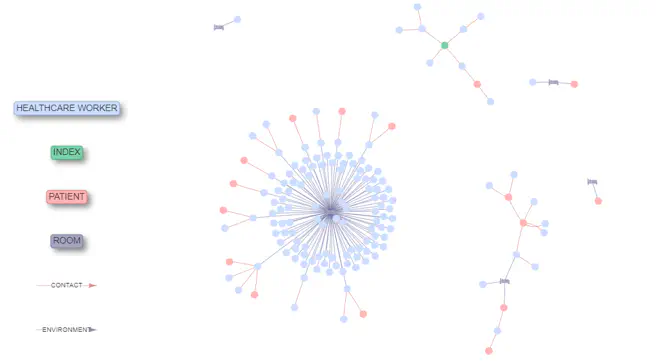Pacri Projet - Modeling the transmission of respiratory diseases in hospitals - coupling contact and environmental transmission

- Through large droplets, emitted while speaking or coughing, which can lead to short-range transmission.
- Through small aerosols, produced when breathing, which can remain suspended in the air and cause long-range transmission.
We developed an agent-based stochastic model that integrates individuals interaction and location data to simulate epidemics of respiratory pathogens in hospital settings. This model accounts for both close-contact transmission between individuals and indirect transmission through pathogen- ladden aerosols in the environment. This model was applied to a dataset of interactions collected in an intensive care unit as part of the NODS-CoV-2 study. We explored different levels of contribution from transmission modes to quantify variations in epidemic dynamics. We observed significant variability in the dynamics of infections depending on the categories of individuals and the levels of contribution of the transmission modes. These results highlight the potential of this model to examine the impact of respiratory pathogens in hospital settings and the importance of considering individual behaviors and spatial factors in epidemic modeling. This approach offers a new perspective on managing respiratory infections in hospitals and could be adapted to other datasets.
Keywords — respiratory pathogens, hospital setting, epidemiology, agent-based modeling, public-health